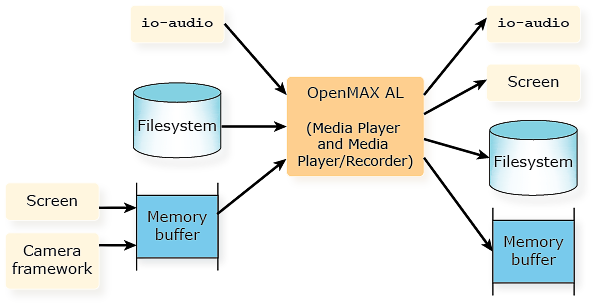The Multimedia for QNX SDP includes a media engine that implements the Khronos Group's standard OpenMAX AL interface as well as some QNX additions. These additions let you extract, transcode, play, and record audio and video content in specific formats.
- Media Player
- Media Recorder
- Output Mix (audio functionality only)

Figure 1. Media flow between inputs, OpenMAX engine, and outputs
The input can be raw audio content delivered by io-audio, a media file, or a video buffer in memory written to by the Screen Graphics Subsystem or the Camera framework. The output can be another driver loaded into io-audio (to direct the audio to a different hardware device), a window in Screen, a media file, or memory belonging to the application. For this last output type, the application can decide what to do with the media content (e.g., stream it over the network).